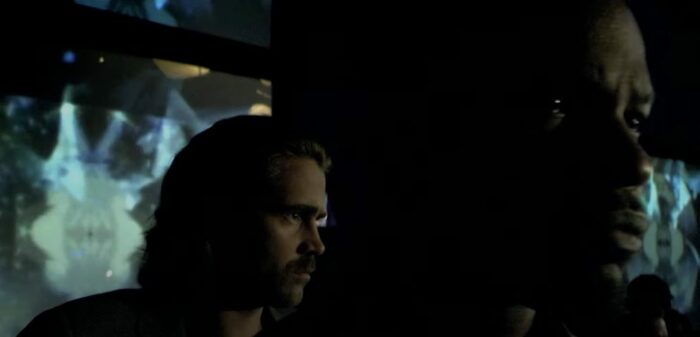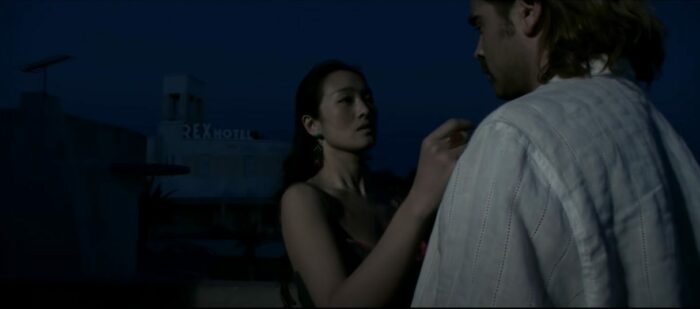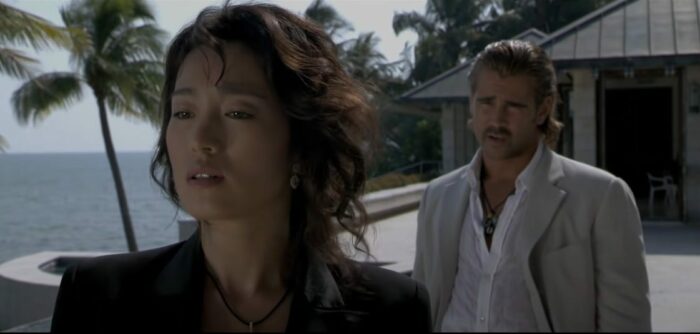You may not remember the 2006 film Miami Vice by director Michael Mann, famous for helming such classics as Heat, The Last of the Mohicans, Collateral, and Thief. Released to little fanfare, the film was largely an adaptation of the critically acclaimed Miami Vice episode “Smuggler’s Blues,” borrowing its themes and storylines and reworking them into a new narrative. The film was disliked by critics, and even more so by audiences, with a 47% rotten score on Rotten Tomatoes and a 48% audience score. It came and went quickly. Many wrote it off as a bad experiment at best and an example of poor execution at worst.
Then a funny thing happened, as the years flowed by, people started to revisit and rediscover this film, and a new dialogue started to take place. What was once called one of the worst films of the mid-2000s started to be called one of the best, with the term “Masterpiece” even beginning to be banded about.
I was and still am a huge fan of the 1984-89 TV show, and I remember not liking the film at all, being baffled by its tone, style, and cinematography choices. In short, like many I wrote it off, then about 12 years went by and all this “Masterpiece” talk got me thinking, that now as a critic I should revisit it. So on the weekend of my birthday, I rented it and decided to go in with a totally open mind.
The first 15 minutes, confirmed my early thoughts, wow this was bad, like really bad. I went into the film expecting a traditional and linear story that led from script point to script point, and I was taken aback by its jarring music, lack of dialogue and purposeful chaos. Instead of embracing the visual and sensory experience that Michael Mann had laid out for the viewer. This opening scene is meant to toss viewers directly into the experience, it feels like Mann wakes you up and then dunks your head in ice water, you are meant to be confused and meant to feel like someone at the nightclub who is seeing the events play out.
However, I decided to stick with it, and a funny thing happened, I began to see that I viewed the opening as “bad” not because it was, but because of my expectations. And I found I began to love this film.
As the smoke from the final gunfight was still settling and the credits began to roll, I had to concur with what many have been saying, the film was a masterpiece. What had started with a very shaky opening had developed into a rich, multilayered story that used its tone, style, locations, and music to tell its tale, not its script.

The best way to describe Miami Vice is not as a movie or story but as an experience. The story and characters play a backseat to the mood, music, set pieces, environment, and ambiance of what is playing out on the screen. The film drops you right into the action and story and moves at a breathtaking speed, feeling dream-like (or maybe nightmarish) as we are swiftly introduced to Crockett and Tubbs in a seedy pulsing nightclub. We follow them and listen to a remix of the song Numb by Linkin Park and Jay Z. The viewer is not asked to understand what is going on, in fact, the script does not even bother to explain, we are asked to come along for the ride, to experience a snapshot of the dark nightlife of Miami vice cops.
Miami Vice was a product of the 1980s and 2006’s Miami Vice is very much a product of the mid-2000s, from its rock music selections to the grimy digital photography of its filmmaking. As the years have gone by this picture has itself become a symbol of its time period, the now out-of-date phones, computers, and clothing, Mann was able to replicate the TV show just in a way none of us expected.
In the mid-2000’s “video” was still new to film, and in Miami Vice, we see Mann still grappling with just how this new technology should work, the camera is often up very close to its subjects, lingering over a shoulder.

In the classic TV show, Miami was as much a character as the cops, such is the case in the theatrical version. Long gone are the pastel larger-than-life archetypes seen in the form of buildings, people, and environments, instead, we are introduced to a frankly menacing Miami one that always has thunderclouds and lighting just off the edge of the horizon. It’s dark and gritty, and you feel the specter of death around every corner.
2006’s Miami Vice asks you to vibe along with it, to immerse yourself in the colors, music, and digital landscapes it inhabits. In fact, Miami Vice so relies on the viewer experiencing rather than following the story, that one could mute the film, turn, up Linkin Park’s album Hybrid Theory and still get just as much out of it. For the fun of it, I tried this and I would recommend it, as it allows the viewer to separate themselves from the script and just be in the zone with the film.
For example, I muted and turned off subtitles for the scene when Sonny and Isabella jet off in a cigar boat bound for Cuba. The scene starts with Sonny hitting on Isabella before we join them in the boat, the wind is slowing the sea is shimmering and the digital photography is grainy and gorgeous. I then turned up Linkin Park’s song “Papercut” and just sat back as the scene played out.
I found that while I could not hear any dialogue, the sexual tension and the flirtatious jabs all played with the scenery and environment to tell the story as clearly as any script could, it’s a cool experience, that opens the viewer to another level of how Mann is telling this story.
Mann is well known now for his use of digital photography in film in Blackhat, Collateral, and Public Enemies. While many directors who use this style try to seamlessly make the digital blend to the classic look of film. Mann instead embraces digital photography in all its grainy glory, like his characters and themes, Miami Vice‘s look is dark, and sometimes blurry. It almost feels like Mann knows we as humans want our lives to be crystal clear and cut and dry, but his Miami Vice is a story of moral greys, and it feels fitting that Mann shot it in a gritty and grainy style of digital to showcase this.
Mann aims for a “slice of life” through his use of digital photography, but it’s not really a “real” slice of life, as much as the way we may feel towards certain aspects of life. When we now think of the world of vice cops, drugs, and gang violence, we do not think of light colors and stylized glamor as the TV show did in the 80s. We view this world as dark, grim, and with a grimy layer over it, Mann brings this with his cinematography in Miami Vice, we rarely see any “normal life” in the film, only the world as these characters see it, and that is a world of grainy vision, dark thunder caps, and shadows around every corner.
If the TV show was made as a snapshot of its era, music, style, and tone, it was a neon-noir dressed in neons and pastels and rocking to Phil Collins. Mann took this idea and replicated it in the 2000s, an era of emotions and inner conflict for young people. The music of Linkin Park, Avril Lavigne, P.O.D, and others reigned supreme in that decade, coupled with fashion and architecture mimicking the style as well. We see this very clearly in the experience of Miami Vice, its music and filmmaking style are all about making you feel something, along with the characters whether discomfort, love, desire, or anger.
Director Harmony Korine cited the film as an influence for his neo-noir Spring Breakers, saying “When I watch that film (Miami Vice), I don’t even pay attention to what they’re saying or the storyline. I love the colors, I love the texture.”

Overall I feel that Miami Vice is a very misunderstood film. Michael Mann never sought to remake his TV show or even revisit its glory. He wanted to recreate the world in the image of a new era, and then ask you to leave all your expectations at the door, and simply climb into the sports car with Sonny Crockett and Ricardo Tubbs and go along for the ride.
This film hands you a mojito and then asks you to experience the emotions of our characters, to feel the menace of the thunder and lightning as it flashes and cracks over the Miami skyline. To have your pulse quicken as you race with Sonny in a cigar boat on your way to Cuba.
Miami Vice might be short on character development for our leads Sonny and Rico, however, this is purposeful as we are treated to the development of the true lead character in the film. In the city of Miami, we see her decadence, beauty, and debauchery. We are told the story of a city that lived large in the 80s, never thinking of the future, and now is old, worn out, and crumbling under the rain and thunder rolling in.
So I hope you will take another look at 2006’s Miami Vice, as after revisiting it, I truly believe it will be remembered as one of the great crime epics of the 2000s.



Many people panned on Heat as well when it first came out, and much for the same reasons: it was too dark, too gritty, wasn’t flashy enough – and had a depth to character and story development that just wasn’t appreciated when it was first released. 15 years later it was being hailed as a masterpiece, and has recently been placed even higher on a pedestal – even before the Heat 2 book was rumored.
I loved Heat from the moment I saw it in the theater – which I didn’t even know I was going to see. It definitely took the shooting styles from the first 2 seasons of MV and expanded upon it in what is now recognizable as Mann’s signature. Off-center, over the shoulder, ground-up and colossal panning to demonstrate scale, reflecting the darkness and grittiness of everything around you in the underworld – as well as putting the camera right smack in the middle of the action when it does happen – up close and personal and with blood splatter on the lens.
We saw a lot of this in Manhunter and Thief, as well as some of the few, dark episodes of the first two seasons of Vice, and this continued with Collateral, MV2006 and of course later with Blackhat. It is a style that many film makers have acknowledged, tipped their hat to and integrating it into their own shooting styles.
I was very anxious to see MV2006 – in part because I was a fan of the old show, and I also had an inside track on some of the production work as it was happening – but also because I knew it was not going to be anything like the show. I expected Heat, Manhunter and Collateral going into the theater – and because of that I was not disappointed.
At the same time – I knew it was going to be bagged on by everyone because they were all expecting the classic MV from yesteryear – or some grandiose & over the top flashy & ritzy take on the criminal underworld like the original – but in modern times. It was also released during a period of remakes that were often comedic and nauseating – failing at properly paying tribute to the originals. This is what people were expecting – or they were expecting an extended version of Will Smith’s “Miami” music video with some Bad Boys thrown in.
Many folks just were not ready for the dim and grim of Miami when associated with the title from the past of flash and gas. There were plenty of dark and complex movies out in the same era – and I firmly believed then as I do now that it would have been a huge hit if it were called anything _except_ Miami Vice. When people hear MV they instantly get an image in their heads – and it certainly doesn’t look like Thief, Manhunter, Heat, Blackhat or Collateral.
If one can wipe away that pre-disposition – and turn on their intellect and gritty perspective lenses – then they are in for as much of a treat in MV2006 as they were in Heat and Collateral.
I’ve gotten several people to re-watch the movie who dismissed it long before – and was able to get many to shift their opinions (if even only a little) after simply putting the name out of their heads, and instead making references to other dark police dramas like Heat and The Shield.